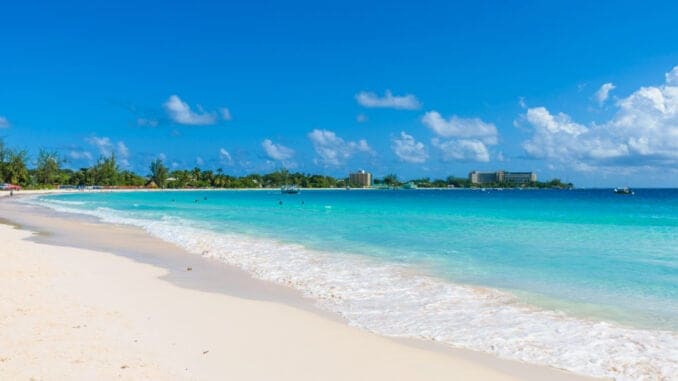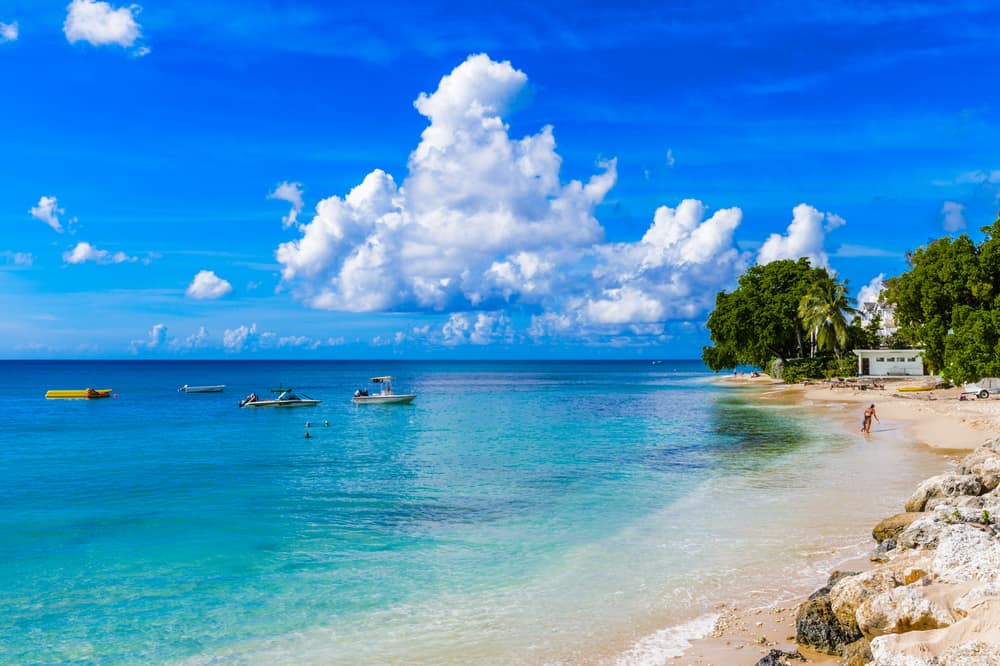
The capital of Barbados is Bridgetown, located on the southwestern coast of the island. As of 2019, the city has about 287,000 residents and is known for its vibrant culture and history, which contains a distinctive blend of British, African, and American cultures. It is Barbados’ largest city.
Read on to learn more about the history and culture of this unique Caribbean city.
Where is the Capital of Barbados Located?

Barbados is an island nation located in the West Indies in the Lesser Antilles – an island chain in the Caribbean Sea. Barbados is the easternmost island of the West Indies and consists of approximately 167 square miles.
Bridgetown is a port city located along the island’s southwestern coast. Two rivers converge in Bridgetown that empty out into the Caribbean Sea – the Constitution River and the Careenage. The Careenage River is an ideal place for pleasure cruises and fishing boats and has two bridges close to the city center.
The southern end of Bridgetown was once a swamp, but it was drained early on by European settlers to make way for development. Now, the entire city matches the same tropical climate as the rest of the island – with a wet season and a dry season each lasting about six months.
Brief History of Bridgetown

Here, we will break down the major events in Bridgetown’s history.
Indigenous People
The West Indies has a brutal history, one fraught with violence, forced takeover by the Spanish, and slavery. Barbados – and in effect its capital city – are no exception to this.
Officially founded in 1628 by the British, Bridgetown was originally populated by various indigenous groups, including the Kalinago people – an indigenous group native to the Lesser Antilles who, according to original records by the first Spanish who arrived on the island, were cannibalistic and warred with other indigenous groups such as the Taino.
The Kalinago are also known as the Island Caribs or simply Caribs and are believed to be related to the Kalina – also known as the Mainland Caribs – of northern South America. Today, many residents of the Lesser Antilles – including Barbados – are descended from the native Kalinago people.
While Bridgetown retains most of its architecture from its colonial days, there is evidence of a bridge over the Careenage in the Bridgetown area that is believed to have been constructed by the myriad indigenous peoples who first inhabited the island.
It was the British who first discovered the bridge and named the settlement and the surrounding area Indian Bridge. In 1654, a new bridge was constructed near the primitive one and the city was named Bridgetown after honored English knight Sir Tobias Bridge.
Colonialism
The Spanish first arrived in the West Indies – including Barbados – in the late 1400s, with Spanish cartographers first including Barbados on a map of Spanish colonies in 1511.
Barbados’ identity as a Spanish colony was short-lived; Portugal gained possession of the island in the 1530s but abandoned it for unclear reasons in 1620. The English arrived just a few short years after the Portuguese left, and the island remained a British colony until it gained its independence on November 30, 1966.
Each of the European groups who arrived on the island captured and exploited the native population for slave labor on plantations.
The Slave Trade
Arguably one of the darkest aspects of Bridgetown’s history is that the port city was an integral stop in the slave trade from African to the English New World. In fact, it is believed that most of the ships carrying enslaved Africans passed through Bridgetown between 1628 and 1712.
Slavery flourished on the island as well. Indigenous people, enslaved Africans, and even Scots and Irish were forced to labor on sugar plantations under brutal conditions.
While the slave trade ended in 1804, slavery continued on the island, which led to one of the bloodiest slave revolts in the history of the West Indies.
Modern Day Bridgetown
Today, Bridgetown is one of the wealthiest countries in the West Indies, with the highest income per capita as any other island nation in the Caribbean. While Barbados’ economy depends mainly on sugar cane, fishing, and tourism, Bridgetown has recently branched out in industry, tourism, and offshore finance and information services.
When did Bridgetown Become the Capital of Barbados?

Bridgetown was established as the capital of Barbados in 1628, as its location as a port city made it an attractive location for early settlers. After the city’s founding, Bridgetown quickly became a major hub for trade and transportation in the Caribbean.
Why is Bridgetown the Capital of Barbados?
Because of its location and the fact that the city was the seat of government during the time of British colonialism, Bridgetown grew significantly and became the island’s major center of industry.
Today, it is Barbados’ largest city and seat of government in Barbados, containing the island’s administrative and government offices. It is one of the major shipping and transshipment hubs in the Caribbean Sea.
Best Places to Visit in Bridgetown
With its incredible blend of distinctive cultures, Bridgetown is a vibrant and colorful city both to visit and reside. While there are countless places to visit, below are listed some of the most popular destinations.
- National Heroes Square and Fountain Garden – formerly known as Trafalgar Square, this historic landmark is Bridgetown’s city center and marked with architecture dating back to the 1700s.
- Barbados Garrison – this UNESCO World Heritage site was built in the 1780s as military headquarters for the British Imperial Forces.
- George Washington House – this mansion, built in the Georgian style, was where American president George Washington stayed in 1751 during his visit to Barbados.
- Parliament Buildings – these incredible limestone landmarks, built in the neo-Gothic style, date back to the 1870s.
St. Michael’s Cathedral – made of coral stone, this building is one of the oldest on the island, dating back to 1789. The original wooden building was destroyed by a hurricane in 1665.
